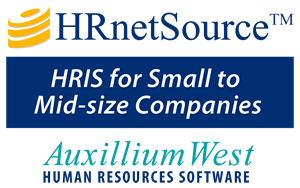Succession Planning
Purpose and Goals of Process (see also how HRnetSource can help):
Succession planning provides a systematic approach for identifying, assessing, developing and reviewing successors for key management and individual contributor positions. The goals of the succession planning process include:
- Identify key management and individual contributor positions that affect business success.
- Ensure a diverse, competent management team.
- Ensure successors to management and individual contributor positions are identified, assessed, developed and reviewed.
- Ensure continuity of operations in the event of the loss of key management and individual contributor personnel.
- Track the development of employees to ensure enriching and challenging assignments and growth opportunities.
Recommended Steps in the Process:
- Review the succession plan Roles and
Responsibilities.
- Identify the employees to be included in the succession
planning process. These could include:
- President and direct reports.
- Direct reports to President's reports.
- Persons in key organizational positions as identified by executive manager.
- Identify a minimum of two and up to a maximum of three
successors using the Successor Identification form. At least
one of the successors should be outside of the incumbent's
immediate program or department (see below on how HRSource can
help).
- Rank the readiness of each successor per the Readiness
Chart.
- Complete a personal history and assessment/development plan
for each successor using the Personal
Assessment form. Aspects of the development plan include:
- Create a list of valuable job experiences. Ask top executives which experiences they believe a potential successor should have before ascending to a top-level position. These lists often include: managing multiple divisions of the organization; a foreign country assignment; a major staff position, such as human resources; a marketing assignment; involvement in a major research and development effort; and leadership of a reorganization task force.
- Provide training. Training programs designed to develop specific skills should include learning the behaviors required, practicing the behaviors, and providing feedback on their use.
- Provide feedback on development progress. Promote self-insight and the individual's acceptance of the need for further development. Using 360-degree surveys can provide valuable feedback.
- Encourage self-management of the development process.
- Provide mentors or executive coaches. A senior executive near retirement who is in a similar job as the succession candidate can be an excellent mentor. Use of Executive Coaches is another option. Coaches can come from inside or outside the organization.
- Incorporate development plans into the performance
management cycle.
- Provide Human Resources with a copy of updated succession
forms.
- Implement are periodic review, at least annually.
Keys to succession planning success include periodic review and reevaluation of the program and tracking the progress of individual development plans. Also key is the buy-in and involvement of current top management.
Developing top management internally versus hiring externally has some significant advantages:
- Enhances motivation and retention of mid-level employees/management by demonstrating internal advancement opportunities
- Internally developed top management understands and supports the company culture
- Avoids creating excessive top management compensation packages that may be needed to lure top managers from their current position
On the other hand, hiring external top management has the advantage of introducing new ideas into the management team. Thus, a mix of one external top manager to two internally developed top managers may be optimal.
Use HRSource™ to document whats skills/competencies and training are required for each management (and any other) position, as well as documenting the skills/competencies and training attained by employees. When looking for a candidate to fill an internal opening, HRSource can list all employees who have at least some of the skills/competencies/training required for the job, listing them in order from the closest match to the furthest match. This "Succession Planning" report can also be used during career counseling and to proactively identify what skills/competencies/training employees need to develop in order to advance to the next level.
HRSource™ can also maintain succession planning records. By including succession planning in the performance management system, the employees and their managers can monitor progress via SelfSource™
